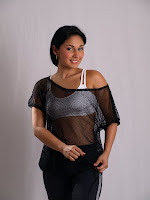INCREDIBLE TIPS TO BUY SWIMWEAR FOR THIS SEASON
What does that mean?
As a fashion designer and a successful business woman my goal is to get everyone to understand how to make that perfect selection and best choice in products when selecting swimwear. This season we are providing a list of words that you may come across in the descriptions of products and what they mean.
One Piece Swimsuit- A piece of woman's clothing, like a leotard, that covers the torso in one piece and is meant for swimming, or just toe-tipping and sunbathing.
Maillot - A woman's one-piece swimsuit.
Monokini - The old school term, "Monokini," meant a one piece swimsuit that exposed the breasts. Today, it usually refers to a woman's one piece swimsuit with cutouts on the sides and/or front. (Also called a Cut-Away Swimsuit.)
Monokini - Pretty much the same as a Monokini. (Also called a Cut-Away Swimsuit.)
Bikini - A woman's two piece swimsuit: a top, or bra and a bottom, or panty. (Men wear bikinis too, but we're not going there right now.)
One Shoulder - A swimsuit that has only one shoulder strap, or support, creating an asymmetrical design.
Tank Suit - A sleeveless one piece swimsuit that has straps over the shoulder.
Tankini -A woman's two-piece suit that's in somewhere between a bikini and a one piece swimsuit, with the top part covering breasts, as well as the ribs.
Brazilian Bikini_ This is a general term for the skimpy, sexy swimsuits that originate from Brazil. They generally have very small cut bottoms, especially in the back.
Competition Swimsuit - For women, this is usually a specially designed one-piece that is worn in competitive swimming, such as the Olympics.
Tops:Bandeau - A woman's bikini bra top, or one piece swimsuit bodice that is a singular swath of cloth across the breasts. It can be twisted, ringed, tied, with, or without straps, or plain.
Halter Top - A bikini top that has elongated cups that tie around the neck.
Stationary Halter Top - A halter top that is permanently attached to a bodice strap and cannot slide back and forth.
Sliding Halter Top - A halter top that has a tunnel along the bottom of the cups for a strap to slide through. This allows the top to be adjusted for a better fit.
Underwire Top - A bikini top that has supportive, curved wires under the breasts.
Demi-Underwire Top - An underwire top that is cut low on the breast, allowing more of the bosom to show.
Floating Underwire - Similar to a regular Underwire, but the wire is suspended within the layers of fabric so it does not show from the outside.
Tri-Top - A simple bikini top that consists of two triangles and strings around the neck and in back.
Stationary Trip-Top - A tri-top that is permanently secured to a bodice strap and does not slide back and forth.
Elongated Trip-Top - A tri-top that slides along a bodice strap and the top points of the triangle are elongated to look similar to a halter top.
Bottoms:Thong - Usually a two piece swimsuit that has very, very little fabric covering the back side of the bum, forming a Y shape in back.
Boy Leg - a swimsuit that has a low on the thigh cut and looks a bit like a boy's pair of pants.
Hipster Bottom - A bikini bottom that is like a woman's set of shorts, but is cut low on the hips. It offers a little more coverage than the average bikini bottom.
String Bottom- A bikini bottom that has strings at the hips that may tie, or may be stationary.
Tie-Side Bottom - A bikini bottom that has strings at the hips that tie.
Euro-Cut Bottom - A bikini bottom that is cut with straight, triangular lines in back. It's skimpier than an American Cut, but not quite as trim, or curvy as a Brazilian cut and offering somewhere between minimal and moderate coverage in back.
American Cut Bottom - A bikini bottom that is cut shapely and slightly fuller in back than a Euro-Cut or Brazilian cut. In the 60's this was a very full cut in back, but now days, it is much trimmer, offering moderate coverage.
Brazilian Cut Bottom - A bikini bottom that is cut shapely and skimpy in back showing much of the bum and offering minimal coverage in back.
Moderate Coverage - This describes the amount of coverage, usually in the back, bottom half of a bikini, covering most of the bum in a fairly modest fashion.
Minimal Coverage - This describes the amount of coverage, usually in the back, bottom half of a bikini, covering about half of the bum. Not as skimpy as a thong, but less than a Moderate Coverage bottom.
Other Terms:
Separates - Bikini tops and bottoms that are sold separately as a single unit, which allows a customer to buy only a top, or only a bottom.
Separate Sizing - Bikini tops and bottoms that are sold together, but are offered in separate sizes. For example a Large top that is paired with a Medium bottom. All of the swimsuits at Sofine Fashions are sold this way.
Ruching or Shirring - A gathering and draping of fabric that gives detail to the swimsuit design.
Embellishment - Added detail to a swimsuit such as beads, sequins, embroidery, findings, etc
About the Author
The author has a website, Sofine Fashions, featuring women’s fitness active wear for Yoga, Pilates, Cardio, Swimwear, and Beach Apparel at:
http://www.sofinefashions.com 



